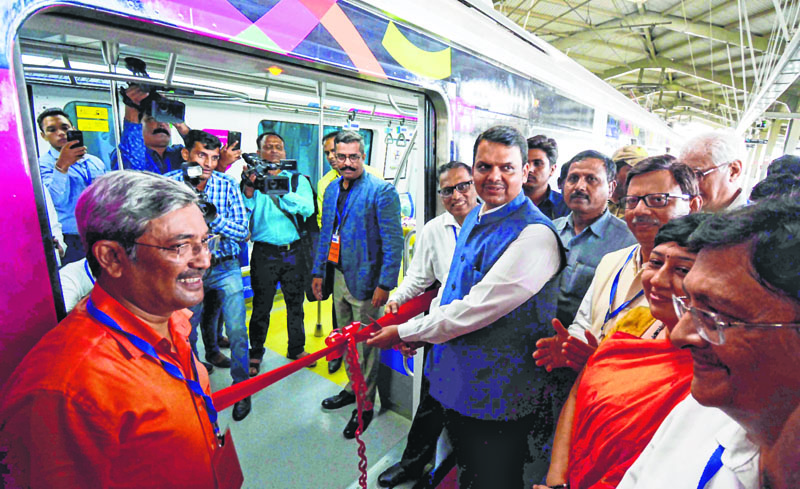There are only a few cities in the world that match the grandeur of Mumbai. One of the most densely populated cities in the world, Mumbai has something for every caste, creed, colour, and religion. The financial capital of India accounts for 2.5 percent of the country’s GDP, 30 percent of Income Tax collections, 20 percent of excise collections, 60 percent of custom duties, and 40,000 crore rupees of corporate tax collections in the Indian economy. Despite contributing such huge amount of taxes and housing country’s most important financial institutions, Mumbai never got its fair share in budgeted expenditure from the government. Congress party ruled the state of Maharashtra for most of the time since independence and the Congress leaders were more interested in distributing sops in Pune region as it was their political base while ignoring Mumbai.
The mindset of Congress leaders to favour people of its own belt did cost a huge loss to Mumbai and the country as a whole. Majority of the state’s collection of taxes had been diverted to Pune region while Mumbai had to sustain on its own. The public investment in infrastructural needs of Mumbai is negligible in comparison to its requirements. The ‘local trains’ which are considered lifeline of the city carry three times more passengers than their capacity. The sewage system and roads in northern Mumbai are as pathetic as any tier III city of the country. Since the BJP government came to power at the centre and in the state, public investment in infrastructure has witnessed a boost and projects were fast-tracked.
The most promising project aimed at changing the face of the city is Mumbai Metro. The Congress-NCP government had started the project back in 2004 and planned to build 146 km metro network in the city by 2021. However, after the inefficient execution of Line 1 of Mumbai Metro, which suffered inordinate delays, the whole project was put on hold. The Fadnavis government not only restarted the project but also expanded the pan of the network to 276 Km. Two lines of the Mumbai Metro network are expected to complete by July 2020, third by 2021 and the fourth by 2022.
The local train has been the identity of the city since long and is called the lifeline of Mumbai. But commuting in local trains is replete with accidents and is also not comfortable. The Indian authorities describe crowding in suburban railway as ‘super dense crush load’. Almost 7 million (70 lakh) people travel daily through the Mumbai suburban railway. But at the same time, at least eight people die daily while commuting in local trains. With the Fadnavis government’s initiatives, the Mumbai Metro promises to solve all these problems.
Mumbai Trans Harbour Link (MTHL), a 21.8 km Freeway Bridge to connect Mumbai and Navi Mumbai is among the big-ticket infrastructure project which has the capacity to change the face of the city. The project was envisioned in the early 1970s but was approved only in 1996 by the BJP-Shiv Sena alliance government. However, the next Congress-NCP government could not make any progress on the project in the following one and a half decade. After the Fadnavis government came to power, the fast-tracking of the project began, the loan agreement was finalized with Japan International Cooperation Agency in 2016 and environmental clearances were awarded in 2017 and the work began in 2018. The project is expected to be completed by 2023. “Any project has three phases — conceptualisation, administrative approvals and execution,” said Kaustubh Dhavse, the officer on special duty to CM Fadnavis. “With regards to the first stage, we largely inherited projects in their preliminary stages. But administratively, the team got approvals for multi-crore projects in the blink of an eye.”
The war room constituted by the government to bring the multiple government agencies to resolve conflicts between different government departments and push the projects to be completed on deadline played an important role in the timely implementation of the project. “Through the war room, we were able to keep inter-departmental conversations articulate and short,” said Dhavse, who oversees the war room. “There were rigorous reviews, all communication was electronic, we discarded unviable projects and prioritised key works,” he added.
The combined efforts of the Fadnavis government in Maharashtra and the Modi government at the centre will solve the infrastructural woes of the city. A city which gives so much to the country and which is often used as a showcase of India’s development story certainly deserves more attention. The government collects 30 percent of taxes from Mumbai and therefore the city deserves a fair share of this. The allocation of money for sea link and the Mumbai Metro line is a good step in the direction but much more needs to be done. If the city is given world class infrastructural facilities, it would propel the growth of the country.
